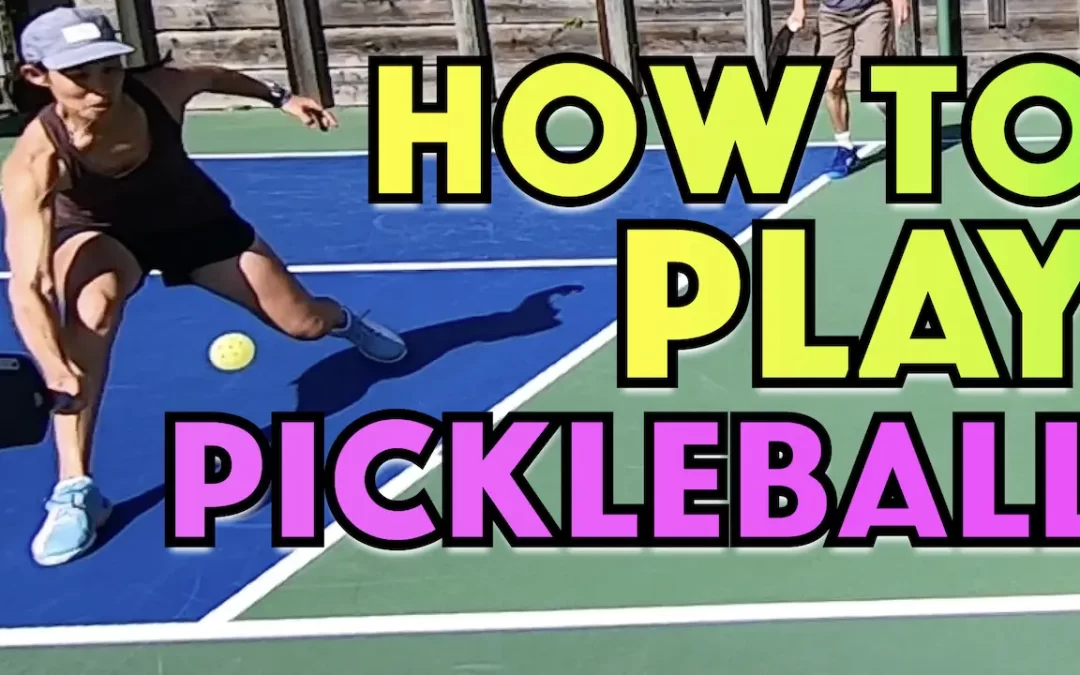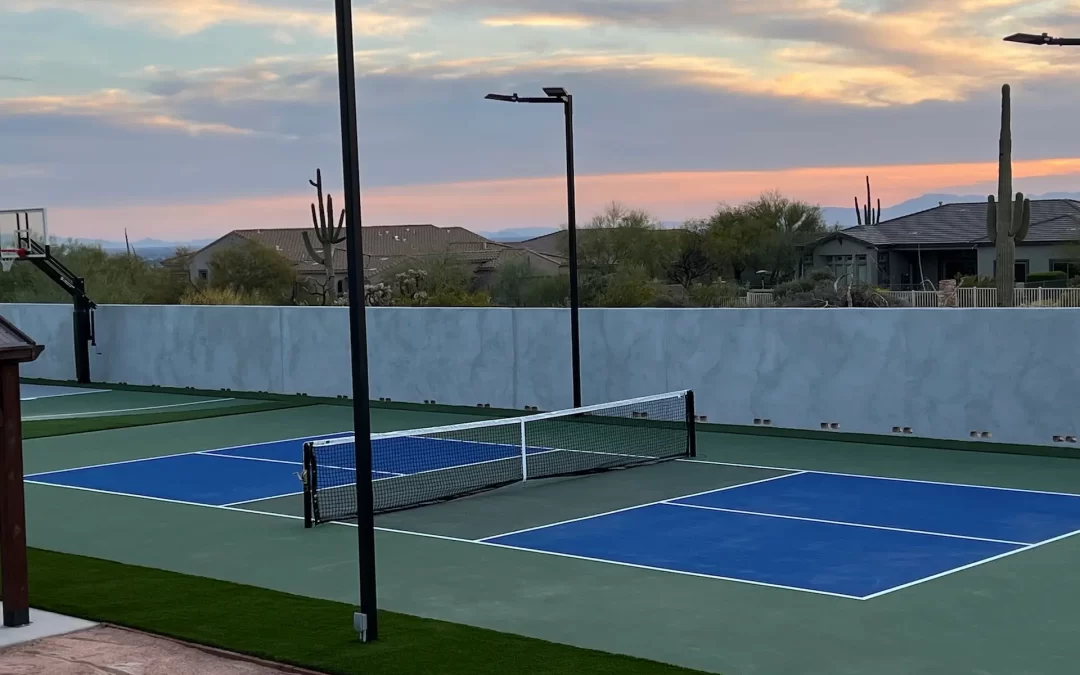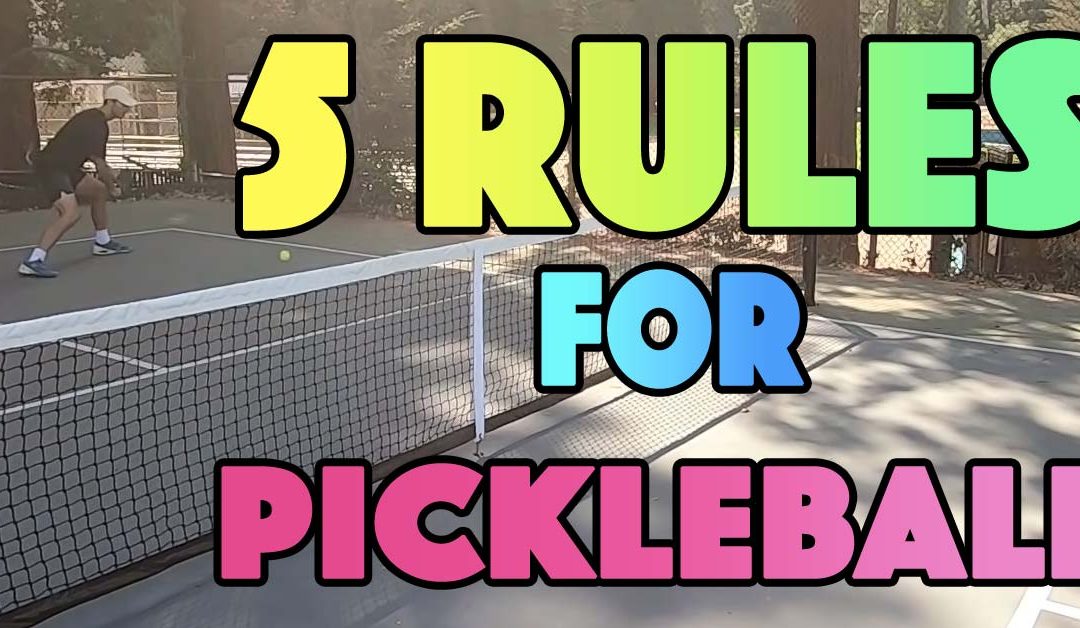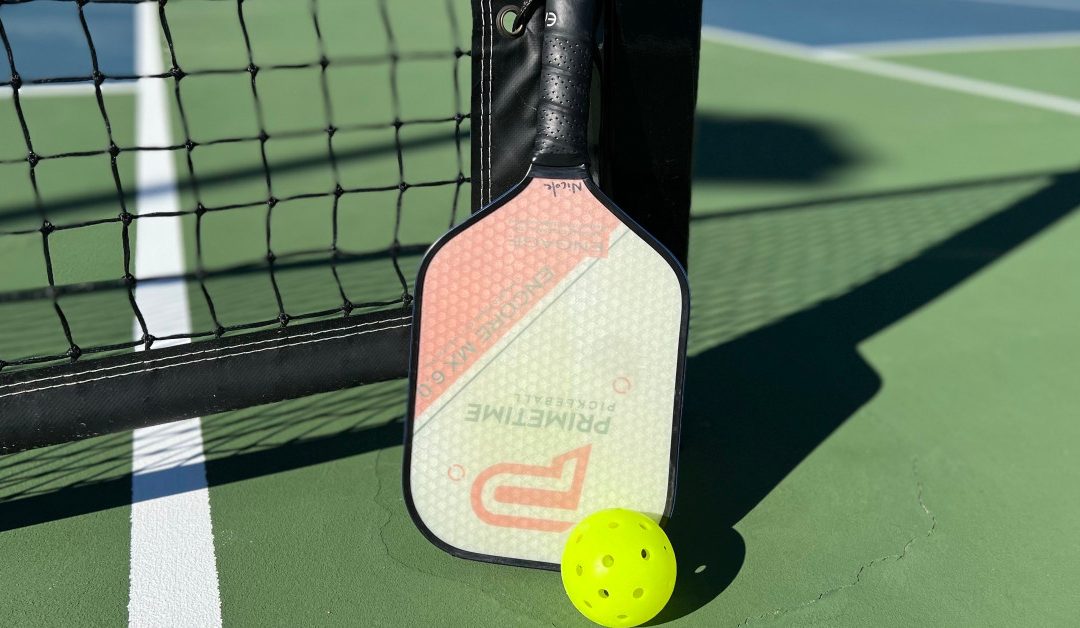Do you struggle with control on your dinks? If you do, or if you’d simply like your dinking to be better, then this is the lesson for you.
In this video/blog, we’ll cover a dinking drill that you can do every time you play that will help you be in control of the point when you get into dink rallies at the non volley zone line.
Check out the video…
Variety is key in your dinking strategy because it’s what will pressure your opponents leading to misses and pop-ups by them which ultimately leads to won points for you.
There are three ways you can use variety in your dinking strategy. You can vary the location, the speed and the spin.
Of these three which would you say is the most important and fundamental to the other two?
Hopefully you guessed it… it’s location variety.
If you don’t have control of your dinks and can’t hit your desired target on your opponent’s side of the court then the other two become irrelevant for the time being because what good does speed or spin do you if you can’t reliably land the ball in the court and on target.
Now as you know here at PrimeTime we’re big fans of drilling but we also know that drilling can be fun when you make a game out of it.
So how can we play a fun game while dramatically improving our dinking accuracy? Easy! And, that’s exactly what we’re going to talk about in this video/blog.
Here’s Jordan To Walk Us Through the Drill..
Today we’re going to go over a dink pattern drill which is really going to improve your placement on your dinks.
This is going to be very helpful in your game because you’re going to be able to move your opponent around and gain very offensive advantage on the court.
Drill
Here’s how I’ve setup up this drill..I have three cones, all on the right side of the court, and I’m facing my partner.
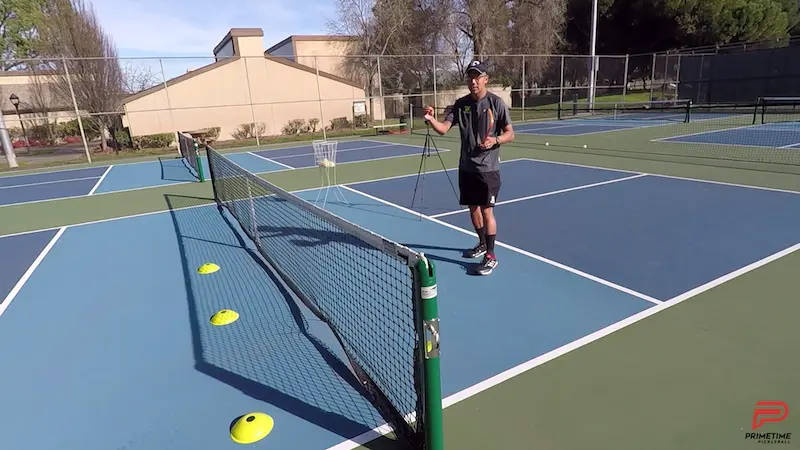
Cone #1 is towards the sideline, cone #2 is in the middle of this right side and cone #3 is towards the middle of the court. Okay, so cone #1 would be to a right hander’s forehand, #2 would be at their body and #3 would be to their backhand.
Now, the cones are set very close to the net but they’re just an indicator of the direction to hit the ball. I’m going to be aiming anywhere after the cone.
These are dink patterns that will help you with your game because they work on your dink placement as they give you a purpose of where to hit the ball and it will teach you how to really get your opponent moving and thinking.
Katrina and I will demonstrate. She will hit the ball anywhere. But, what I’m going to do is to pick a pattern that I’m going to follow for this exercise.
The first pattern I’m going to pick is the 1, 3 pattern. So, I’m going to hit towards cone #1 and then #3 and repeat that pattern. Katrina can hit the ball anywhere she wants. Anyone can start the drill by feeding the ball. I will feed this one to start it off.
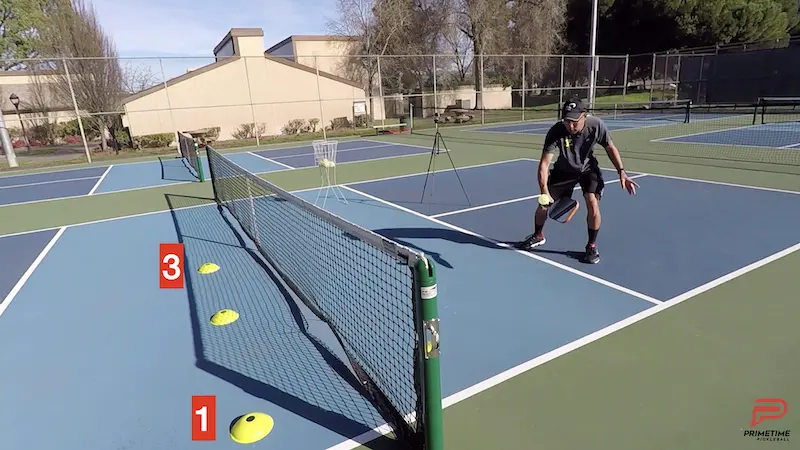
Here we go. So I go 1, 3, 1, 3 and she is hitting the ball anywhere she wants, moving me around and I am going 1, 3, 1, 3, 1, 3, 1, 3, 1.
So now let’s try a different pattern. Let’s say a 1, 3, 2 pattern. So, I’m going to hit it to her forehand, then her backhand, and then the middle towards her body.
Here we go 1, 3, 2. Again, 1, 3, 2, 1, 3, 2.
Now let’s try another random pattern. Katrina will call out 4 or 5 numbers and then I’m going to follow that sequence.
2, 3, 2, 1 – Okay so let me try to follow that pattern.
Basically you can follow any pattern you like and you and your partner can switch off and take turns.
You can even set up cones on each side and you both could follow different patterns simultaneously.
Now, this is really going to help in your placement and you can even make a game out of it.
Game
When making a game out of this, if you want a little more clarity as to whether the target was hit or not, you can replace the cones with lines by using either chalk or tape and that will establish a more clear boundary.
A suggestion on how to score this game is to use the scoring system we call 7-11.
Since the player following a dinking pattern is more severely constrained than the other player who is free to hit anywhere there is more opportunity for the constrained player to miss, making it more difficult for them to win the game. They have a much smaller target to hit into each time they make a shot than the other player.
To make things fair, in order to win the game, the less constrained player has to score 11 points before the constrained player scores 7 points.
Scoring the game in this way levels the playing field and makes the game more fair and therefore likely more fun and competitive.
If you were to only score first to reach 5 points and the two players are of roughly even skill then the unconstrained player would win almost all the time.
You can also take the same game and use it cross-court on both the even side and the odd side.
You want to work things from all possibilities because everything works differently when you change the parameters.
For example, in general pickleball players tend to have weaker backhands and that is typically more exposed on the odd side in a game situation so you’ll definitely want to play this game on the odd side.
Also, playing down the line on one side versus the other is not the same either even though at first glance it might appear to be.
If you’re a right-handed player playing on this side (see image below), the net is higher in front of your forehand and lower, here, (see image below) in front of your backhand.
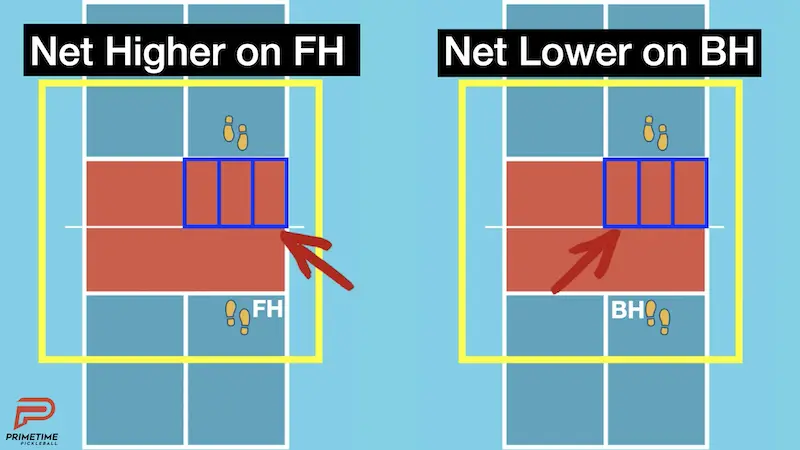
And on the other side of the court, the net is higher in front of your backhand and lower in front of your forehand.
That does change things and you have to account for it and play from all possible variations to get the most out of this game.
With tape or chalk or simply an agreement between the two of you, you can extend the boundary line beyond the kitchen line.
Deep dinks that force a late contact on your opponents are an extremely effective tactic in pickleball. As long as the shot is still clearly a dink, even if it’s a firmer one, and you weren’t swinging like for an attack, then it’s fair game.
You can hit deeper and beyond the kitchen line.
You should learn to work deep dinks into your mix of dink locations. The best players do this because it works.
This dink pattern game will force you to get really good at your dink placement which is exactly what you want.
There isn’t much forgiveness because if you miss your intended target it’s out even if it would have been in in the greater game of pickleball.
Mastering location variety on your dinks should be high on your priority list of skills to master if it’s not something you have in your toolbox already.
This game is a great way to develop and lock in that skill.
Give it a try!
I hope you really enjoy learning this drill. This is going to really work on your placement on your dinks and it’s going to allow you to move and dictate the point when you’re up at the net. Thanks so much for joining us and we’ll see you in the next video/blog.
Get our free 3rd shot course here! –> 3rd Shot Drop Course

